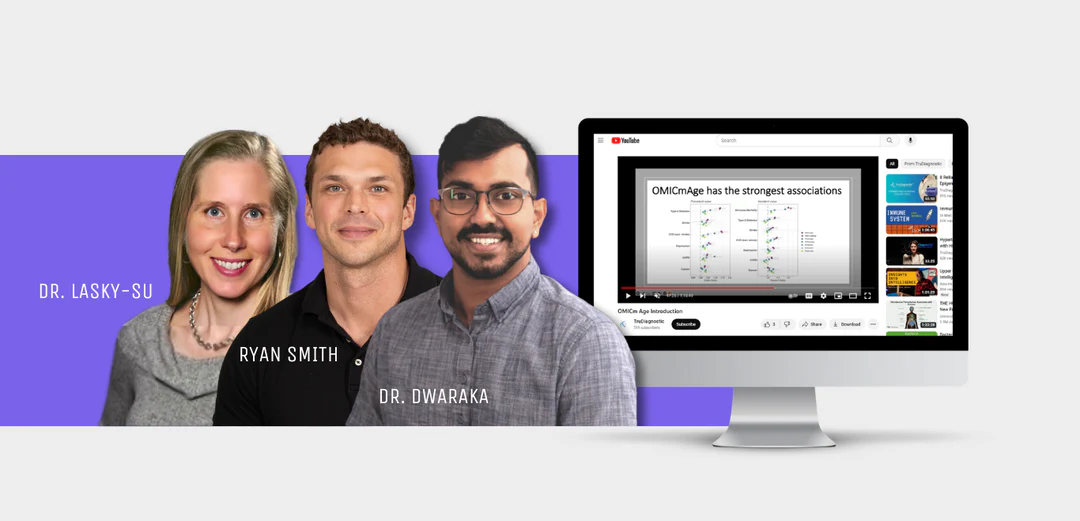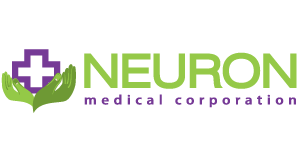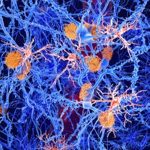
Neuron Medical
WATCH NOW:
The science of OMICm Age with Harvard and TruDiagnostic researchers.
Learn more about OMICm Age: the best epigenetic clock ever created to date, that significantly out-predicts other previous clocks like GrimAge and DunedinPACE. OMICm Age was developed in collaboration with Dr. Jessica Lasky-Su from Harvard University, via samples we procured from Partner’s Biobank.
From these samples, Dr. Lasky-Su and TruDiagnostic researchers did a full, multi-omic analysis to make sure we got as much biological information as possible in our aging biobank cohort. This includes proteomics, metabolomics, genetics, epigenetics, transcriptomics, and classical phenotypic information such as clinical blood labs and disease. It is one of the most robust datasets on aging ever created.
Dive deeper into the science of OMICm Age with the researchers who developed it! In the webinar below, Dr. Lasky-Su joins Dr. Varun Dwaraka and Ryan Smith from TruDiagnostic to explain what makes the novel OMICm Age algorithm so accurate and actionable.
What is OMICm Age?
▐ OMICm Age is the newest epigenetic biological age clock created by researchers at TruDiagnostic and Harvard University. It uses some of the most comprehensive aging data ever collected in a single cohort to predict the age of your body through advanced epigenetic methylation algorithms.
Why is OMICm Age important?
▐ Age is the biggest risk factor for almost all chronic disease and death. However, the unique biology of aging can be very different in people who share the same birth year. That is why we see some individuals in their 70s who look 50 years of age, and vice versa; highlighting the need for a better way to measure bodily aging. This is why the concept of biological age was created. In the OMICm Age publication, we document just how important this distinction is. Chronological age simply isn’t a reflective metric of the underlying, biological differences in aging. OMICm Age was trained to do that in a much better way, as demonstrated in our death prediction models.
How was OMICm Age conceived with Harvard collaborators?
▐ In 2020, there were only nine universally recognized, biological hallmarks of aging. By 2023, that number shot up to 14! The reason for this increase is that aging is enormously complex ,and we can see change in almost every organ and biological process as we get older. Given the importance of quantifying the biological aging process, TruDiagnostic decided to collaborate with researchers at Harvard University to create the most robust and informative biological age measurement to date. The complexity of the aging process makes quantifying it down to a single metric difficult. However, our approach was to measure as much variation in aging through large-scale, high-powered, multi-omic analysis. By quantifying each Omic, we believed we could uncover insight into a wide variety of hallmarks of aging and other unique biological aging processes. This research project started in late 2020, with the creation of an aging dataset called the Massachusetts General Hospital Aging Biobank Cohort (MGH-ABC). From this dataset, we analyzed aging biomarkers in over 30,884 participants. Additionally, in a select and smaller group of 5,000 people, we did advanced metabolomic, epigenetic, and proteomic analysis. With these additional omic measures, we were able to create the OMICm Age clock. This is a robust 2nd generation clock that shows higher associations to age-related diseases over any other previously published clock; representing an effective way to quantify biological aging through DNA methylation alone.



